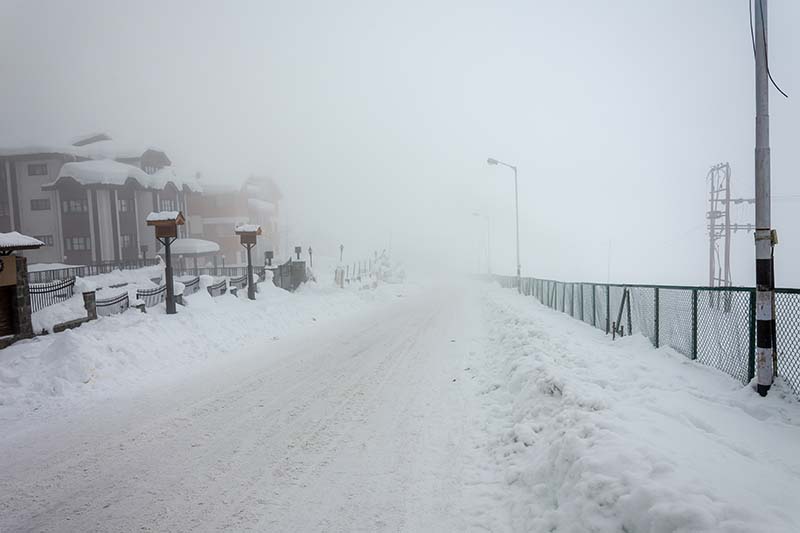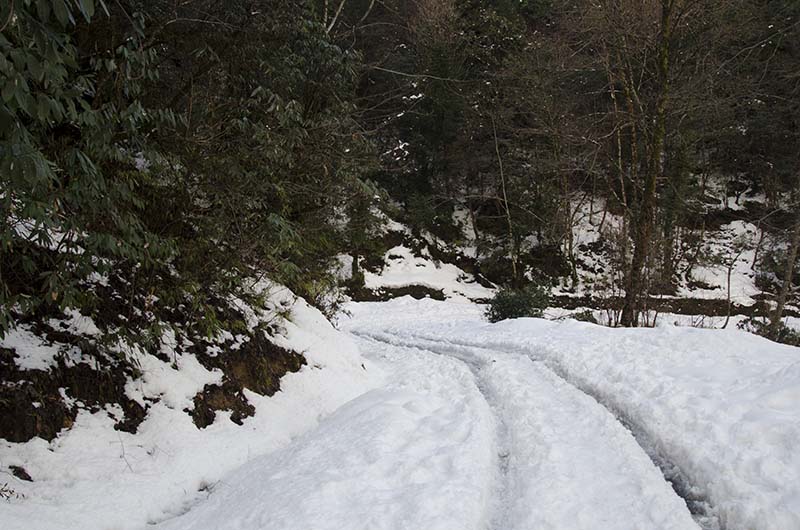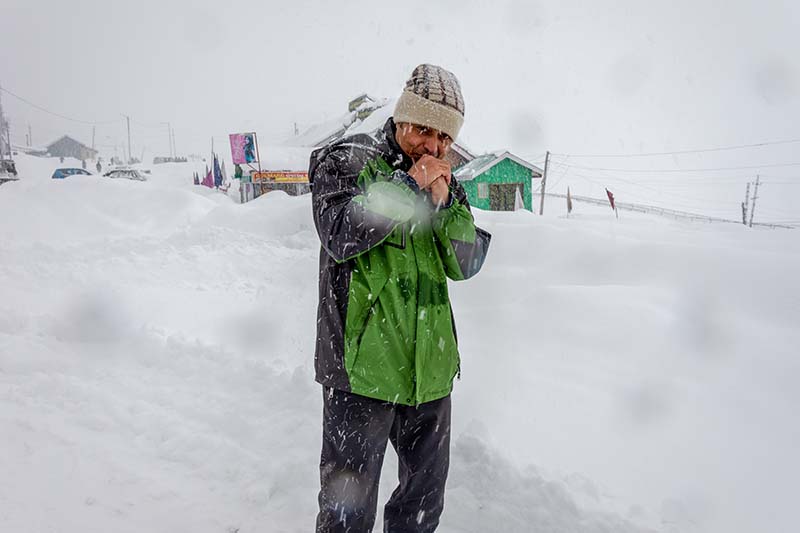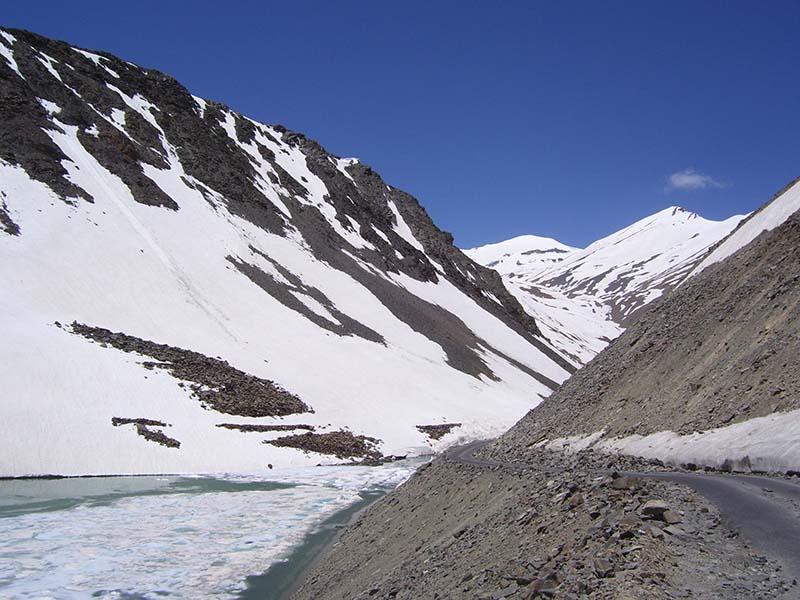Mentioned below in this post are a few tips for cold weather motorcycle riding that can help you stay safe and as comfortable as possible. A bike ride in the winter season is definitely fun, especially if you are heading into a snow-covered area. But with all the fun also comes the risk, as well as the hassle.
It is definitely not everyone’s cup of tea. You need to be very well prepared and must know what you are getting into. Even if there was no snow on the road, the trip will still be very demanding.
You really need to first ask yourself why you want to do it. Why are you going on this trip? The second question will be about how much riding experience you have.
If this was your first bike trip and you were going just because your friends asked, I will highly advise against it. A winter ride is really for someone who has done a few long-distance motorcycle trips before.
You must be comfortable with sitting on the bikes for long hours; able to handle the weather; able to ride in low visibility and should know how to maneuver the machine on any kind of terrain or road conditions.
If you have not done all of this before and are not greatly confident, I will recommend first going on a few short rides and weekend trips and then planning for something in the winter season.
Quick Navigation
Tips for Cold Weather Motorcycle Riding
I have been doing motorcycle trips for a long time now and have been out on a trip every month of the year. I have done winter rides in places like Ladakh and Spiti Valley (in India) and several other towns of Himachal and Uttarakhand.
Nearly a decade later of riding, here are some of the things I’ve learned about winter motorcycling riding.
When preparing for this ride, there are three aspects that you will have to look at; the weather, your machine, and yourself.
Weather is what you must be fully aware of. Your machine is something that first must be capable of the ride and then serviced. Last but not the least; you would have to be ready for the adventure, both physically and mentally.
Yes, I am using the word ‘adventure’ to describe this journey because it is nothing less than that. If you want a ‘winter vacation’, then catch a flight or hire a taxi.
But if you are taking your motorcycle out, you are putting your trip in the category of an adventure and must be prepared to experience the thrill of extreme weather.
What are the challenges of the trip? Well, there are numerous. A motorcycle is more than likely to slide and fall in the snow. Even if you did not find snow on the roads, the danger of black ice will still remain.
Not only you will have to handle the motorcycle, but also do all that you can to keep yourself warm. You will be riding wearing heavy gear and clothes that will make maneuvering the motorcycle even more difficult.
The list goes on and on but here are a few tips that can make things a lot easier and manageable.
Black Ice
The threat of black ice is real and a very big one in fact. What is black ice?
It is a thin sheet of snow that forms over the surface overnight due to freezing temperatures. It is very thin and practically invisible. You would not know there was ice on the road until you hit it and by then, it would probably be too late.
The best way to deal with the ice is not to start too early. Wait until the sun is up and then start your journey for the day. This will help the ice to melt before you hit the road.
If, however, it was cloudy with no sun, or you had to start early, I will recommend going very slow. Applying brakes on black ice will not help and will only result in a fall. Rather, just keep going slowly and carefully until you are clear of the stretch.
Also Read: How to Carry Spare Fuel on a Motorcycle Safely
Know your Limitations
This one is probably the most important of all the tips. You really should know what you are capable of and what you aren’t. If cold and wet weather is not your thing then a winter ride is surely not for you. You should rather stay at home.
Even during the trip, do not blindly follow others or be over-confident. If you face something tricky, pause for a minute and evaluate the situation before you attempt it.
You should also know where your motorcycle can take you and where can it not. If you have a small engine bike or a very old one, then there is no way that it can handle steep climbs, snow roads, and being on the road all day long for several days.
If you push it too hard, it will just break down somewhere along the way and leave you stranded.
Pack Proper Gear
A bike ride in the winter months means you will face cold winds all day long. Your body heat will keep getting taken away faster than your body can produce it.
In the absence of proper gear, riding in freezing temperatures, you will run the risk of hypothermia. Or at the least, you may fall sick which will pretty much ruin the trip for you.
When you are packing for the trip, you need to ensure that you are bringing in gear that can cover you completely, leaving no space for air to hit your body while on the road. Other than that, your gear should also be able to keep water and snow out.
Below is a list of some recommended items to help you save from the cold weather.
Also Read: Packing for Long Distance Motorcycle Trip – What & How
Full Face Helmet
One of the most important tips for cold weather motorcycle riding is the one that is a must irrespective of when and where you are riding the bike Yes, I am talking about a good-quality full-face helmet.
I have seen a lot of people paying thousands to buy a motorcycle but when it comes to a helmet, they start worrying about the cost and look for a cheap one. In my words, this is really stupid.
This is one piece of equipment that will guarantee your safety and is really your shield while you are riding. It is more like a long-term investment and you should always look for one that is both safe and comfortable to wear.
While going on a winter ride, please make sure that you are bringing in a full-face helmet with good protection and a white visor.
Do not buy one with a dark visor because you may have to ride in low light conditions or at night. If that happened, you will have to ride on a cold winter night with the helmet glass up.
Also, while buying a helmet, please make sure that it has proper ventilation and cushioning; and is comfortable enough to wear for long hours. It should neither be too tight nor too loose.
Balaclava
Balaclava is really a personal preference but can be of great use. If you are OK wearing one, it can add another layer of protection underneath the helmet.
More than that though, it can help protect your neck, an area that is most exposed during the right because neither your jacket nor your helmet can cover it.
Since the Balaclava wraps around your head, face, and ears, and extends well into your clothes, it can protect the entire portion against the sneaking air sneaking.
I myself cannot use it because it starts to feel a little suffocating (just my personal thing). So what I rather do is wrap a scarf around my neck, extend it a little up to my face, and then wear the helmet on top of it.
Either way you do it, a Balaclava or a Scarf will really come of great use during a winter ride.
Jacket
This will be your lifeline and the most important accessory. You will have to pay close attention to what kind of jacket you are bringing in.
It cannot be too heavy because you will then just be uncomfortable on the bike. But it can also not be too light because then it will become useless.
I will recommend a jacket that is both warm and water-resistant. Do not bring a leather jacket because that won’t protect you against the rain and will also just get ruined due to the water and the snow.
Another thing to note would be to buy a jacket that has elastic cuffs around the wrists. This will help prevent any air from slipping into the wrists and making your arms freeze.
If your jacket also has a hood, then it will surely be an added benefit. This will come into use after you have reached your destination and need something to cover your head and neck in the evening/morning.
Thermals/Warmers
I will highly recommend wearing thermals during the ride for several reasons.
The first one is that these help you keep warm. The second is that they hug your body and will prevent any wind from sneaking in. The third reason is that you can also wear them comfortably while sleeping.
The fourth reason is that the legs often get neglected. We put on sweaters, and heavy jackets and add several layers of protection on the upper body but waist below; it is usually just a trouser or riding gear. Wearing a thermal will keep your legs warm and help ride comfortably.
Gloves
Your fingers freeze first. Speaking out of my personal experience, the most painful thing during a ride is when your fingertips and nails start to freeze.
You can manage with everything else and keep riding slowly but with your fingers, the pain really becomes unbearable. So much that you will have to stop every few kilometers to warm up your hands and get some relief from the pain.
And it is not only just about the pain as well. With your hands freezing, there is no way that you will be able to handle the bike efficiently, and will risk an accident or a fall.
To ensure that this does not happen, you must bring a pair of good-quality gloves.
Do not buy the normal woolen gloves that you will use normally. Those are not designed for bike rides and will not keep the wind out. For a winder ride, you need to get a pair of gloves that is,
- Wind Proof
- Water Proof
- Can help keep your hands warm
- Has a clasp or elastic around the wrists to seal it off completely
Shoes
With shoes as well, please ensure that they are windproof and possibly waterproof as well. Buying a pair of snow boots should serve the purpose.
In some places, you may be required to walk in the snow, and doing that while wearing normal sports shoes will be impossible. Also, get a pair of woolen socks to keep your feet warm.
Also Read: Long Distance Motorcycle Riding Tips
Trousers
If you can then yes, you can buy a pair of riding pants. If you were doing that, I will recommend buying complete riding gear. Otherwise, just wear a normal pair of jeans but layer it up with some warmers.
Visibility and Distance
Visibility in the winter season can reduce significantly, owing to the fog and snow, and you should also be very careful while riding. Be alert and maintain distance from other vehicles.
I have seen some people riding right behind trucks and buses, using them as cover to avoid cold winds. That is just stupid. Doing so will completely block your visibility and in case the vehicle in front of you applied sudden brakes, you will crash into it before you even realize what happened.
Don’t Stop if it Snows
If it starts to snow while you were on the road, the worst thing you can do is to stop and wait it out. Remember, it is not rain but snow.
The longer you wait, the more the snow will accumulate, making it unsafe for you. If you encounter a snowfall, reduce your speed, ride slow and carefully; but just keep going to the nearest town where you can find shelter.
Keep an Eye on the Weather
Before starting any ride, you need to find out how the weather ahead is going to be. Keep an eye on the forecasts and if there is even a small chance of major snow, stay put, and postpone your plans.
Stay Warm and Hydrated
The dry air of winter sucks the moisture out of you without you noticing. Keep yourself hydrated and continue drinking small amounts of water, even if you did not feel like it.
The cold makes you tired. Extra rest stops and eating right and regularly are important. Take breaks often and have tea, coffee, or soup whenever you can.
Your Machine – The Motorcycle
All these tips for cold weather motorcycle riding were about how you prepare yourself for the ride. Now let us talk a little about what kind of motorcycle will be the best option.
The first thing is that if you are heading into areas with freezing temperatures, it is best to avoid bikes with only the electric start option. I am talking about the fuel-injected bikes that do not have a kick to start.
Why? Because in such cold weather, chances are that it may refuse to self-start after a freezing cold night. Without a kick, you will be stuck and will have to find a way to recharge the battery again.
For long rides, cruiser bikes that you can sit straight on are best. A couched riding position will put stress on your shoulders and overall body which will make it difficult to continue riding for hours.
Engine oil gets used way faster in a cold climate. So it will be wise to keep checking for a refill once you cross 1000 kilometers mark. If possible, carry engine oil and refill it on your own when required.
Every morning, before you start your journey for the day, allow your bike some to warm up. Leave it with the engine turn on for a while as you pack your luggage.
I will also recommend carrying an extra spark plug, fuse, a tire tube, a puncture repairing kit, a foot pump, and a tire Valve. Some other necessary items will include your motorcycle’s tool kit, electrical tape, and cables (clutch, accelerator, brake).
Cold tires offer less grip. If the road was slippery, try deflating the tires a little. It will help get more traction and prevent the bike from skidding.
Keep your Rides Short
During the winter season, days are going to be shorter and the temperature can drop rapidly once the sun goes down. So factor that into your planned distance and keep your rides short.
Even on your longest days, your ride should no longer be more than 6-7 hours.
Tips for Cold Weather Motorcycle Riding – Conclusion
I hope the above tips for cold weather motorcycle riding were of help. If you have any questions, you can contact me on Instagram and I will be happy to answer. You can also consider subscribing to my YouTube channel and asking a question there.
[instagram-feed]




